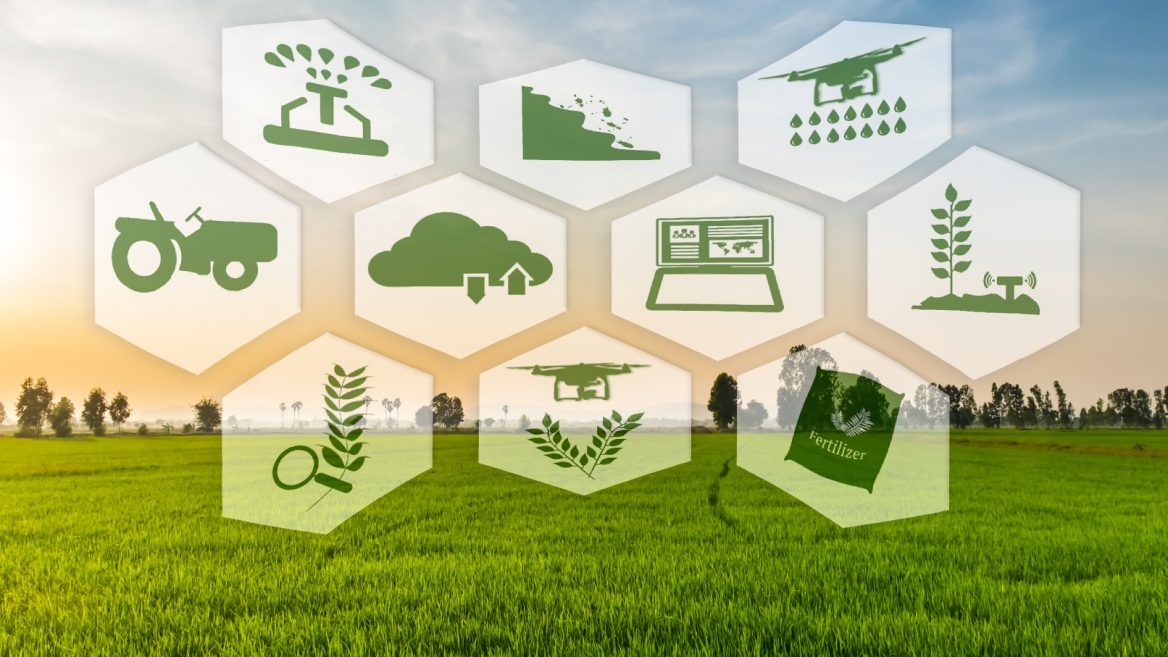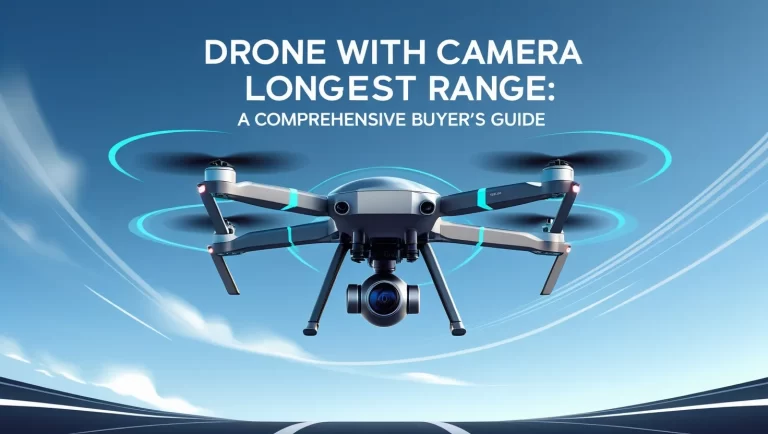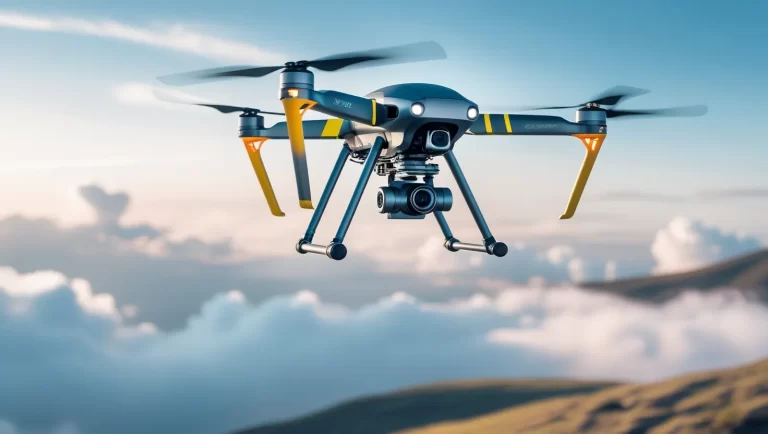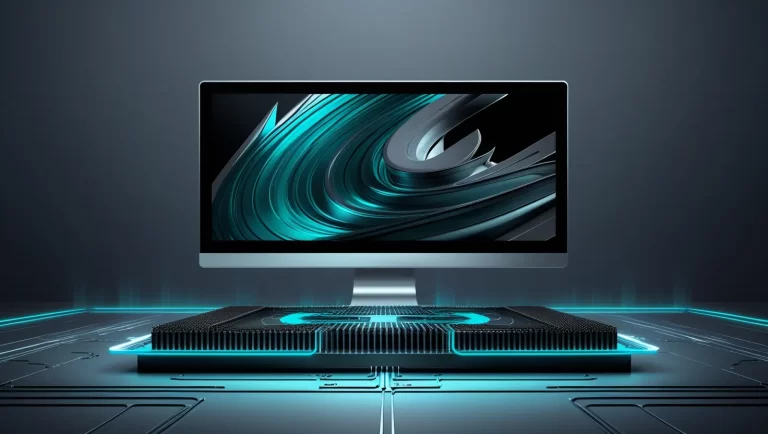
Precision Farming Made Easy: Exploring Drone Technology for Agriculture-The agricultural sector has seen remarkable transformations in recent years, thanks to advancements in technology. One of the most revolutionary innovations is drone technology for agriculture, which is reshaping the way farmers approach precision farming. Precision farming involves using data and technology to optimize the efficiency and productivity of agricultural practices, and drones have become a game-changer in this regard. In this article, we will explore how drone technology for agriculture is making precision farming more accessible, efficient, and effective.
What is Precision Farming?
Precision farming is an approach that uses advanced technology and data analytics to monitor and manage farm activities. The goal is to ensure that each aspect of the farming process—from irrigation to fertilization—is optimized for maximum efficiency, sustainability, and productivity. By focusing on individual crops and specific field zones, precision farming aims to minimize resource waste, reduce costs, and improve yields.
While precision farming has been around for years, the integration of drone technology for agriculture has elevated it to new heights. Drones provide farmers with high-resolution, real-time data that makes precision farming more accurate and actionable than ever before.
How Drone Technology Makes Precision Farming Easy

Drone technology for agriculture is all about gathering data from above to enhance decision-making on the ground. The ability to quickly and efficiently assess large fields has traditionally been a challenge for farmers, but drones are changing that. Here’s how drones make precision farming more accessible:
1. Real-Time Crop Monitoring
One of the main advantages of using drones in precision farming is their ability to monitor crops in real-time. Drones equipped with multispectral, thermal, and high-resolution cameras fly over fields and capture images that provide detailed insights into crop health. This technology allows farmers to monitor plant conditions from the air, identifying early signs of disease, pest infestations, or nutrient deficiencies before they become widespread problems.
This real-time data enables farmers to take quick action, whether it’s applying fertilizer to a specific area, treating a pest outbreak, or adjusting irrigation schedules. By addressing problems early on, farmers can prevent crop loss and improve yields.
2. Efficient Field Mapping and Analysis
Drones can also help create highly accurate maps of farm fields. By using GPS technology, drones capture precise data about the size, shape, and elevation of different areas within a field. This allows farmers to create detailed field maps that can be used for various purposes, including soil analysis, crop yield predictions, and pest control.
With these maps, farmers can identify areas of the field that require special attention, such as parts with poor soil quality or areas that need more water. This level of precision enables farmers to apply the right amount of resources only where needed, minimizing waste and maximizing crop productivity. (Read More: EOS Technology Drone: The Future of Precision Agriculture)
3. Targeted Fertilization and Irrigation
One of the most significant challenges in farming is managing resources like water and fertilizers efficiently. Overusing or misapplying fertilizers and water can lead to wasted resources, higher costs, and environmental harm. Drone technology for agriculture helps farmers implement targeted fertilization and irrigation.
By flying over the field, drones can collect data about soil moisture levels and nutrient deficiencies. This data can be used to create prescription maps that guide farmers on where to apply fertilizers or water. As a result, farmers can apply just the right amount of resources, which not only reduces costs but also promotes sustainability by minimizing runoff and preventing overuse of fertilizers.
4. Pest and Disease Detection
Pests and diseases are a constant threat to crops, and early detection is crucial for preventing widespread damage. Drones are equipped with sensors that can detect early signs of pest infestations or diseases that may not be visible to the naked eye.
By using drones to capture high-resolution images of crops, farmers can quickly identify affected areas and treat them with precision. Instead of spraying entire fields with pesticides, drones allow for targeted pesticide applications, reducing the amount of chemicals used and minimizing the impact on beneficial insects and the environment.
5. Reduced Labor Costs and Increased Efficiency
In addition to improving accuracy, drones also help reduce labor costs. Traditionally, farmers would need to walk or drive across large fields to inspect crops, which is time-consuming and labor-intensive. Drones eliminate the need for manual labor by providing aerial views of crops, allowing farmers to assess entire fields in a fraction of the time.
This efficiency not only saves time but also frees up farmers to focus on other critical tasks. Drones can cover large areas of land quickly, making it easier for farmers to manage vast fields and monitor multiple crops simultaneously. (Read More: The Future of Delivery: Zen Technology Drone Innovations in 2024)
The Future of Precision Farming with Drone Technology

As drone technology continues to evolve, its applications in agriculture will expand. In the future, drones will be able to automate tasks like planting, spraying, and harvesting, further streamlining farming operations. Additionally, the integration of artificial intelligence (AI) and machine learning with drones will enable even more precise decision-making, as drones will be able to analyze data and make autonomous decisions about how to manage crops.
The development of smaller, more affordable drones will also make this technology accessible to a broader range of farmers, including smallholders in developing regions. As drones become more affordable and advanced, precision farming will become the norm rather than the exception, allowing farmers around the world to increase yields, reduce environmental impact, and ensure food security for future generations. (Read More: Zen Technology Drone: A Game-Changer in Agricultural Monitoring)
Why Drone Technology for Agriculture is a Game-Changer

Drone technology for agriculture is a game-changer because it brings precision farming to a level of accessibility and efficiency that was previously unattainable. With drones, farmers can monitor crops in real-time, create detailed field maps, and apply resources more effectively, all of which contribute to better yields, reduced costs, and more sustainable farming practices.
In a world where food production must keep up with the growing population and the pressures of climate change, precision farming powered by drone technology is a key solution to ensuring that agriculture remains productive and sustainable. Whether it’s improving crop health, reducing resource waste, or saving time, drones are making farming smarter, more efficient, and ultimately, more successful.
Conclusion article Precision Farming Made Easy: Exploring Drone Technology for Agriculture
Precision farming is no longer a futuristic concept—it’s here, and drone technology for agriculture is making it easier than ever for farmers to adopt this efficient, sustainable approach. From crop monitoring and targeted irrigation to pest detection and field mapping, drones are transforming the agricultural landscape and enabling farmers to optimize their practices with greater accuracy. As technology continues to advance, the future of farming looks brighter than ever, with drones leading the way in making farming smarter, more sustainable, and ultimately more productive.





1 thought on “Precision Farming Made Easy: Exploring Drone Technology for Agriculture”